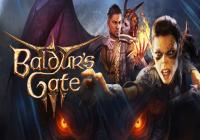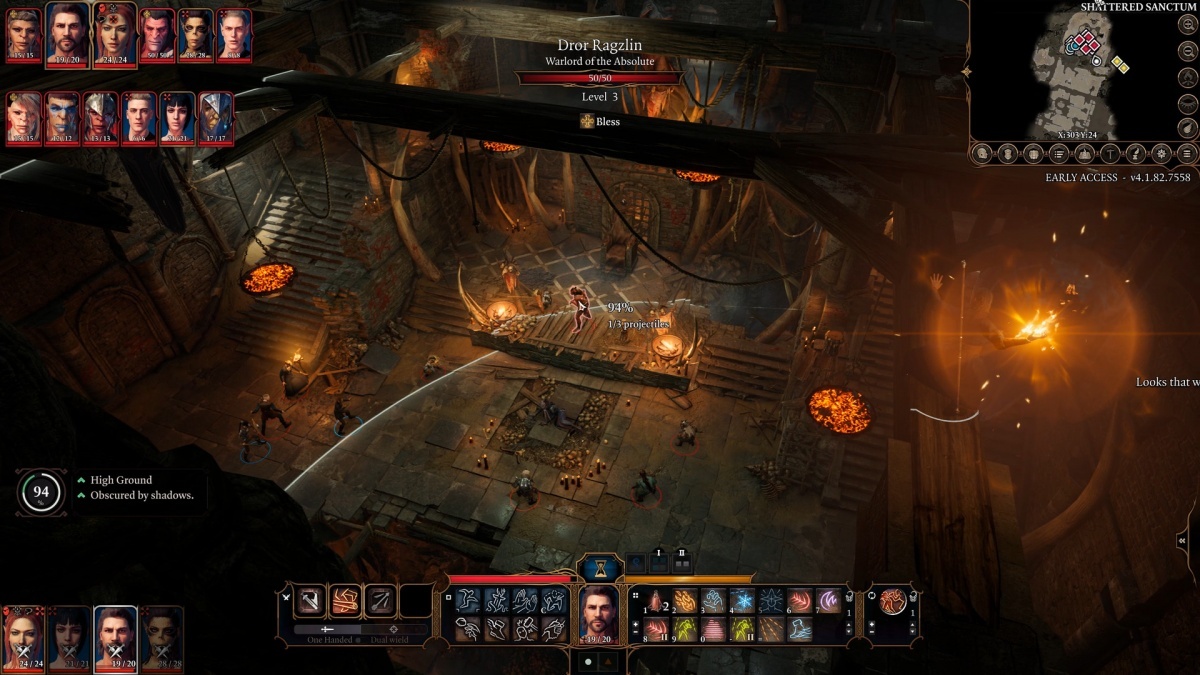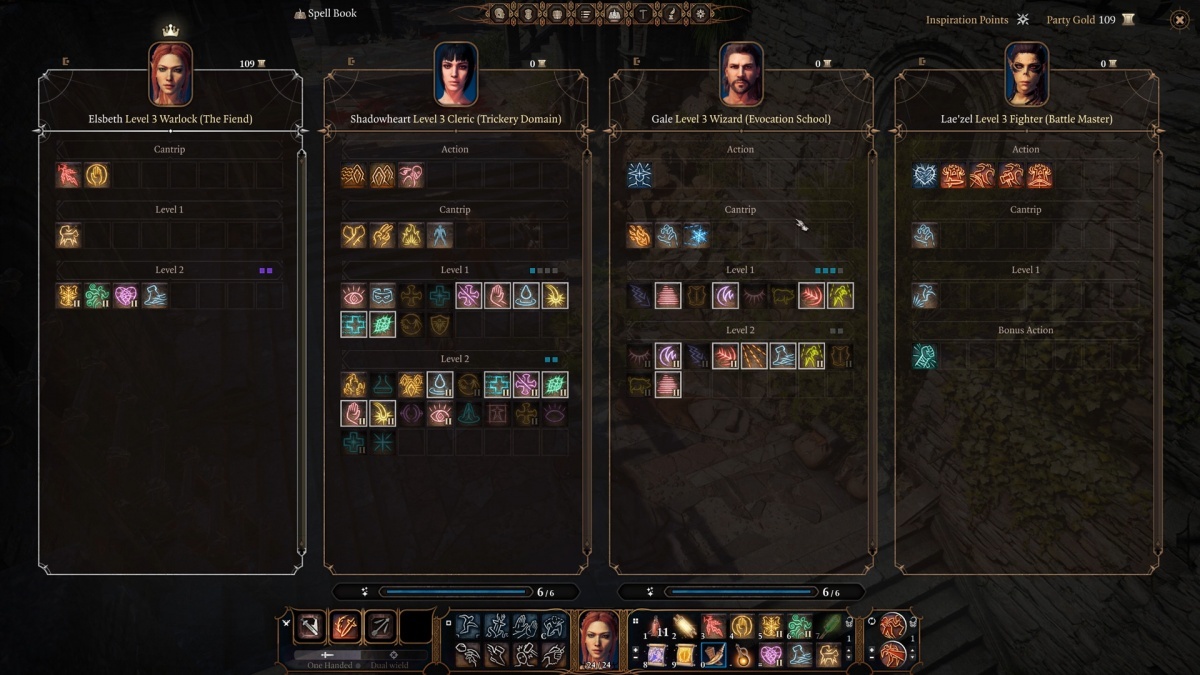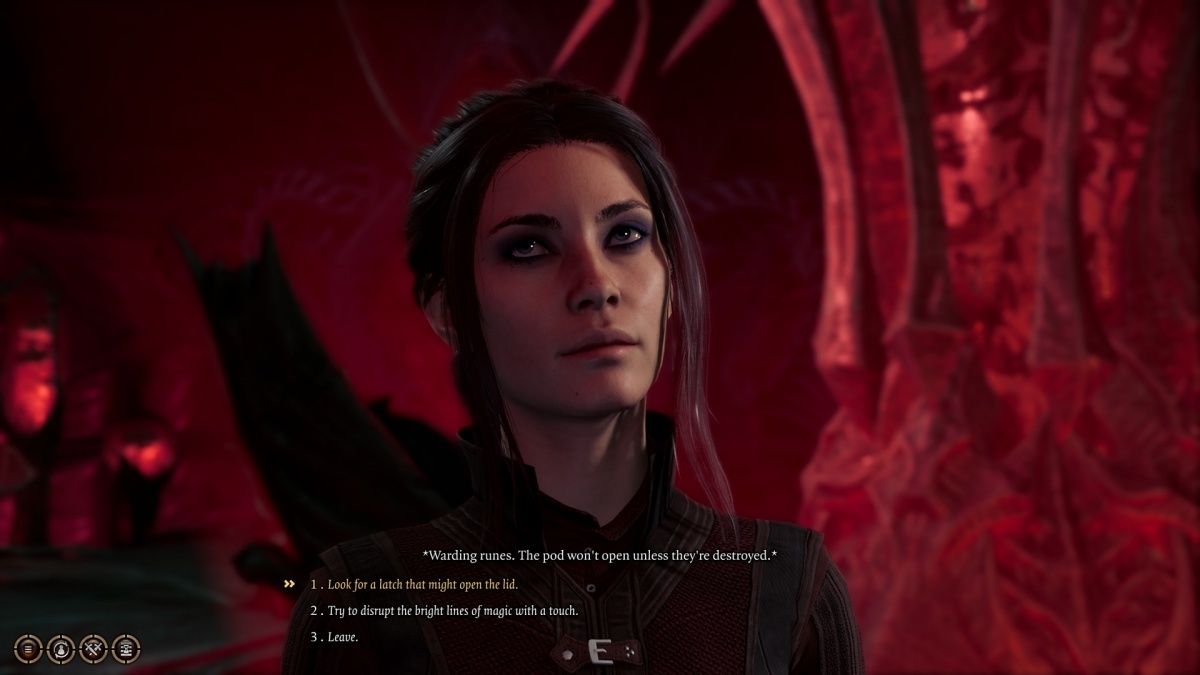Baldur's Gate 3 (PC) Preview
By Chris Leebody  31.10.2020
31.10.2020

For anyone familiar with PC role-playing games, the late 90s marked something of a golden age, with Fallout and Fallout 2 hitting the shelves among other notable titles. However, one series captured the imagination of many. Set in the Forgotten Realms of Dungeons & Dragons, Baldur's Gate released to critical acclaim, with the isometric RPG introducing gamers to a cast of memorable characters and a unique fantasy setting with swords, spells, and an epic story. This formed the basis of what many gamers consider choice-based story telling. Sadly, the years passed and as the developers at Bioware went on to other projects and publisher Black Isle Studios rebranded, many feared the Baldur's Gate series would be relegated to history. Step forward RPG veterans Larian Studios, the team behind the remarkable Divinity franchise. With a new turn-based combat system and some next-gen graphics, Baldur's Gate 3 enters Steam's Early Access program and gamers get the chance to jump onboard the development journey. Gather your party...
Baldur's Gate 3 wastes no time getting straight into the action. Waking up on board a mysterious flying ship as the prisoner of terrifying tentacled beasts isn't the most wholesome start to life in this world, but it certainly kicks things off with a bang. Said tentacled terrors are the Mind Flayers, the game's malevolent antagonists. Capable of mind-control techniques through the parasite they have conveniently embedded in the skull of your created character, these beings are plenty feared around these parts of the Forgotten Realms.
Thankfully though, with a ship on fire and heading for certain death, there promises a route of escape. But even after shortly disembarking in a fiery crash on an abandoned beach, things don't really get much better: a population under attack by goblin raids, races of beings at war with each other, and more generally, every group of NPCs is suspicious of a party of travelling companions who seem to have the ability to read minds and summon powerful abilities. From shapeshifting hags to monstrous trolls, Baldur's Gate 3 is a world of endless dangers and struggle. It's excellent, then, that it is also a world rich in opportunities for adventure and role-playing.
Upon starting up the campaign there is the customary character creation menu. Those familiar with Divinity: Original Sin will automatically be at home with the array of character classes, from knights to rangers to wizards (with sub-classes to unlock among all those). This is on top of the variety of races which are far more than just cosmetic. Being small and sneaky, Halflings for example start with higher dexterity and also come with luck bonuses. However, they might have less health than the Dwarf class. Additionally, while there are differences in pure stats, in the world of Baldur's Gate race impacts role-playing and how people react. It is incredible the amount of variation in how quests and conversations pan out, even just based on the simple choice of whether the protagonist is an Elf or a Human.

Speaking of choices, the sheer amount of them within quests is incredible. This is of course an Early Access title and Larian puts the approximate length of the current adventure at around 20-30 hours long. That is just the tip of the iceberg. It is possible to replay this segment of the adventure multiple times and still not see and do everything available right now. In terms of the various aspects in which quests can branch out, Baldur's Gate 3 is unlike most other titles before it. From the long arching main quests to the random side adventures, the most unexpected twists and turns can happen and more often than not, happen entirely without meaning.
While most RPGs often talk a good game as far as choice goes, it often boils down to either A or B paths. Here, not only are characters' motivations incredibly complex and reactive in many ways, but the player's party members will impact quest progression when they make their own choices. Kill the wrong person, forget to save someone or say the wrong thing and soon things can spiral out of control in unexpected ways. One of the key factors in Baldur's Gate 3's impressive dialogue system is the dice-rolling mechanic. As a Dungeons & Dragons adventure, rolling a dice is fundamental. Dice rolls pop up at some point in most conversations, often multiple times. While it has a random element, it is also influenced by all sorts of passive skill buffs, based on the aforementioned selection of class and race.
It can feel irritating and scary that all the control is taken out of how a conversation goes, based on the random nature of how the dice rolls, but it does bring to the fore the fundamental elements of what role-playing is all about - surprise and adventure. Rolling with the punches is something it is imperative to get used to here. This experience is so different and so excellent precisely because of how unpredictable things can turn out. That unpredictability even stretches to allied characters. On the crashing of the Mind Flayer ship, all those onboard are flung far and wide and gradually, overtime, come together. Of course, they all have one thing in common: a potentially deadly parasite in their minds, but one that also lets them communicate telepathically with one another.
This parasite arc is the tool that strings along the main quest line throughout the Early Access portion of the campaign, with the desire to rid the party of the nasty bug a very useful way to drive the story along. The search to remove it presents many options, from powerful healers to bargains with the devil. Each choice has a price to pay. This provides a fascinating sense of lingering danger and is a great method of bringing characters together. It's a powerful dynamic in also delivering that unpredictability, with each of the cast reacting to the situation differently. The motivations of each come into play when making countless decisions, and an approval system for each of them in relation to the player character forces the need to balance their desires and goals with the overall party. This isn't arbitrary: a resting camp acts as the party's base. It functions as a sort of healing system, but alongside that allows discussions to take place among other members of the party. It is here where that approval system matters.

From romances to assassination attempts and even members deciding to leave, this is not a crew that is happily embedded with each other. At the start of this adventure everyone is suspicious and looking out for themselves and as things move along it is up to the player to gradually form a tight-knit team. This team is one that is highly impressive and enjoyable to play as. From Astarion, the sarcastic and sadistic vampire-spawn who was trapped under the slavery of his previous master, to Lae'Zel, the Githyanki fighter who is determined to destroy everything in her path to remove the parasite. They are all so well-rounded and well-written.
This makes it hard to let one of them down or disagree with them, simply due to how much their stories and characters build organically over time. The voice acting and delivery is also of an exceptional standard, but this is no surprise with Larian, who seem to go out of their way to ensure sound design is always a key focus. For those familiar with Larian's previous work, combat in Baldur's Gate 3 is very much focused on their turn-based system utilised in past titles. This time around it work on the basis of an initiative system within the D&D 5E ruleset. Some fans of Baldur's Gate were undoubtedly disappointed by that news, with the series traditionally using the approach of "real-time with pause" combat. However, upon using the system in-game here, it is clear that it was the right choice to focus on the style Larian have made their name with and with which they have so much experience. Combat flows incredibly well and the same tactical and skill focus is apparent here.
There is plenty of choice. From over 150 spells and abilities to dozens of different sets of equipment and weapons; from long-range ranger focus to a rogue who sneaks around the battlefield - the variety of tactics and strategies is mind-blowing. The addition of an acute sense of verticality ensures that those who take the time to prepare for combat by moving into good positions benefit from that diligence. During conversations it is possible to switch to another character and so by selecting Astarion, for example, you can use his superior sneaking to manoeuvre to a better position where he can spring an ambush and use his vampiric fangs.
With everything from sneaking to shoving to the ability to jump long distances, things feel much more fluid and natural than even Divinity: Original Sin did. While there is certainly less of an emphasis on the environmental tricks in Baldur's Gate 3, there are more than enough spells and items that allow players to experiment with freezing enemies or setting them on fire, or indeed shoving enemies off ledges. If there was one criticism, at least in Early Access, it would be that the camera can sometimes pose a real challenge, particularly because of that verticality. Often, there would be enemies whose outline on the map appeared to be in the same room, but then suddenly after wasting an attack they were actually standing on the roof of a building. Equally, the camera can often get stuck within the environment and it takes active effort to reposition it and fix it back onto where it should be. Hopefully, these are kinks that will be ironed out as development continues.

Graphically, Baldur's Gate 3 is very impressive even at this early stage. Granted, there is a significant amount of work still to be done in this regard. The main character designs are spot on and the overall world - from cavernous dungeons to murky swamps - look fantastic. However, there is a hell of a lot of graphical glitches and missing textures. From environments taking a long time to load or not loading at all to janky cutscenes, it should be expected by people jumping into this version that they are getting an unfinished product. Likewise, this is mirrored in very many cutscenes missing throughout the adventure, some of which likely contain incredibly important context and character development which significantly impacts the storytelling.
Lip-syncing of characters is also a problem, albeit one that's more of a distraction than anything major. Some of the more notable NPCs also look very generic and it is hoped that Larian are working to make them more unique. While game-breaking bugs didn't seem to be too much of a problem (especially if playing on DirectX 11 as opposed to Vulcan, with the former seemingly much more stable on most systems), there were a few instances of crashes, mainly during loading. Overall though, the game has launched in a surprisingly fit state and from an optimisation point of view, seemingly without too many users complaining of difficulty running the game.
It's worth talking as well about the UI, which in a title like Baldur's Gate 3 is incredibly important. This is slightly disappointing and hopefully Larian take a lead on the work they did in improving Divinity: Original Sin's UI over time. The amount of screen space dedicated to icons, the mini map and character portraits feels like a bit too much. Equally, the inventory and also the journal needs a complete rethink in terms of management. The amount of clicking required and general journal clutter will hopefully be sorted out. That being said, the base here to work with over the coming months and years is something very positive. There have been numerous hot-fixes already and knowing the way Larian work, the communication with players is likely going to be consistent and cooperative in terms of taking on board some of the key improvements already suggested.

Final Thoughts
Baldur's Gate 3 promises to be an incredible adventure when it eventually exits Early Access. Frankly, it already is. This early portion of the game is a fantastic chance to jump in and experience why this is such a beloved franchise and why Larian are exactly the right team to deliver on its promise. But that word "when" is crucial. While many have and will love the chance to jump on board, others may feel more reluctant at this stage and they would have every right to do so. With updates likely resetting save files and a host of unfinished cutscenes, characters, stories and even graphics, this is certainly nowhere near the finished product. This is an RPG with an unbelievable scope in terms of player-choice, storytelling and organic dynamic gameplay, but also one with a few rough edges at this stage.
 C3 Score
C3 Score  9/10
9/10
Reader Score  0
(0 Votes)
0
(0 Votes)
 Out now
Out now  Out now
Out now  Out now
Out now  Out now
Out now
Comments
Comments
Baldur's Gate 3 promises to be an incredible adventure when it eventually exits Early Access. Frankly, it already is. This early portion of the game is a fantastic chance to jump in and experience why this is such a beloved franchise and why Larian are exactly the right team to deliver on its promise. But that word "when" is crucial. While many have and will love the chance to jump on board, others may feel more reluctant at this stage and they would have every right to do so. With updates likely resetting save files and a host of unfinished cutscenes, characters, stories and even graphics, this is certainly nowhere near the finished product. This is an RPG with an unbelievable scope in terms of player-choice, storytelling and organic dynamic gameplay, but also one with a few rough edges at this stage.

![]() 9/10
9/10
![]() 0
(0 Votes)
0
(0 Votes)
 Out now
Out now  Out now
Out now  Out now
Out now  Out now
Out now Comments are currently disabled

 Sign In
Sign In Game Details
Game Details Subscribe to this topic
Subscribe to this topic Features
Features






 Top
Top

